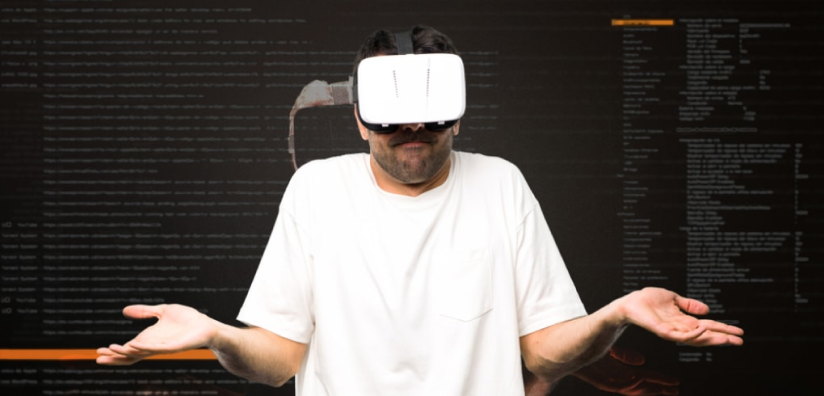“Before the update, I would’ve given this five stars, but the game was ruined.”
From a review on Oculus website
Positive feedback is essential for growth of every startup.
Unfortunately, VR startups sometimes face unpleasant comments—comments full of anger and frustration when they release a new app or update an existing one. When single users write negative reviews, there is little cause for alarm: even the best apps get bad reviews. But the situation becomes more precarious when community members frequently support low ratings.
Below we list the five most-common issues VR users never forgive any Virtual Reality startup. Ever. These issues drag even the most exciting app ideas down to the bottom of app store.
To avoid a wave of rage from disappointed users, check your VR app against these issues before you release it.
1
Virtual Reality startups’ low level of development standards Cause: Technical issues
“Good concept, terribly executed.”
An increase in Virtual Reality startups makes fresh entrepreneurs deliver their apps as soon as possible. However, decrease of time-to-market cannot be done without a cost of code quality.
Technical issues top the outrage chart way ahead of the rest of the field. When users encounter technical flaws, they strive to figure out a solution. If these are little things, users easily forgive and forget. However, when more serious issues arise, they soon give up, leaving the app with a frustrated review and no desire to proceed—or return.
The range of technical problems is quite extensive.
A typical list of high-priority issues includes:
- Users unable to install the app
- Users cannot launch the app, only an error screen appears
- Game crashes regularly with no time to save progress
- Game freezes and users experience wrenches
- Users experience problems with positioning
- App comes with unfriendly design of controls
- Users need special controllers to play
- Images out of sync with user’s movement
- Server issues prevent multi-player use
Top Virtual Reality startups eliminate these issues through a thorough design of specifications, careful development, and scrupulous testing process with a dev. Team focused on successful app development for startups.
Of note: CI / CD pipeline makes it possible to cover an entire app codebase with automation testing and deploy tested source code several times a day ensuring the same bugs do not appear again and again.
Get in touch with us to implement CI / CD practices to your project
Your project
Contact us
2
App development for VR startup started long ago: missed its “best before date” Cause: Insufficient quality of content
Users demand as much immersion as possible, giving one-star feedback when they think graphics are poor or too simplistic.
VR technologies, both VR engines and VR hardware, keep rapidly evolving to satisfy demand for life-like VR experiences. This means time is the publishers’ enemy: the quality of app graphics that was acceptable—and even superb—a couple of years ago, can quickly and easily become obsolete. Not to mention, poor quality of graphics fatigues the eyes and might trigger a headache.
The more time passes from the start of the development process to app release, the higher the chances users will not like what they see through their headsets.
Virtual Reality software startups need an Agile approach to reach the market as quickly as possible while maintaining a high-quality code. Older apps need updates in order to correspond to new, improved graphics standards to keep their popularity. [Ensure you app is developed for such updates.]
Also, voices do matter. Right placement of sound adds drastically to overall immersion. The wrong placement annoys and distracts, triggering users to quit the app. Users adore it when the app speaks to them in a fine voice in their native language—this can add some extra points in users’ personal list of best VR apps.
Of note: VR apps need the right balance between immersion and reality when preparing top-notch VR content.. Excellent quality means deeper immersion, but experiences too close to realism might provoke nausea or seizures. Hence, VR developers must test an app on real users to study their reaction to the designed, virtual world.

3
Virtual Reality app trying to appeal to universal audience Cause: Half-baked UX
“the game is very short and simple”
Every VR publisher must decide from the beginning who their target audience is: tech-savvy or casual players? New or experienced users?
If the Virtual Reality startup attracts the wrong audience, it gets the wrong rating. Experienced users get angry when they are promised an adventure but, instead, play through the entire game in 30 minutes. Conversely, new users quit the app simply because they cannot handle the controls.
User-experience problems include:
-

Lack of interactivity – e.g., when users get a VR tour, they expect to open every door.
-

Unbalanced game play – as above, experienced users get bored quickly, newbies give up after several attempts.
-

Unintuitive menu – e.g., experienced users get pumped when they see dozens of options for fine tuning; inexperienced users—not so much. Churn for them means a bad review for you.
-

Not enough room space – you design an active VR app, but users cannot play it to avoid destroying everything around them.
-

Unrefined controllers – users can barely handle the app with accompanying clumsy controllers and either buy something better or abandon the app.
-

Clumsy port of PC game mechanics onto VR platform – many users dream about VR versions of their favorite games, but they expect to see more freedom and more diversity from a VR game than from a PC game.
Again, users expect more freedom in their actions compared to old PC / console games. For example, they want a wider range of hits and defensive flaps. They get irritated when they must mechanically repeat the same movements again and again with no practical gain.
Another important point for startups and Virtual Reality. Many VR users are looking for open-world experiences and smooth VR multiplayers. Those who create it get the largest fan base ONLY if they match expectations. This would be a world where global users can gather in clans roaming through large spaces for hours and fighting monsters or other players.
Therefore, app owners must be careful in their promises and offer only what they can deliver to the group of users who would benefit most from their VR app idea.
4
Startup attaches to a once-created plan (or budget, or timeline – pick up any) Cause: Ignorance of user feedback
App users often provide awesome insights on what they need from a VR app. When users are ignored for whatever reasons—need to catch up with timeline, cut budget or firm attachment to own viewpoint—they express their opinion through ratings. As a result, four- and three-star reviews turn into one-star comments.
No doubt, publishing teams are always under pressure. They must satisfy everyone by keeping up with their promises regarding feature list, quality of source code, app design, deadlines and so on. In this situation, it is easy to miss essential advice from the most valuable party—the user.
As result, situations happen when users test closed beta and provide excited reviews. And then they see that the features they liked the most are unavailable, being too raw for official release or even abandoned as ‘insignificant’. In this case, VR startups need to work tightly with community in order to identify the level of excitement and refocus on the newly discovered top priority. When there are not enough resources for a timely release, developers need to either announce a realistic plan or explain why it is not possible. The last option might not help when it is supposed to be app’s killer feature.
Also, users might not understand the idea. For example, when game designers want to add drive into a game, they can save progress only at certain spots. However, when users do not understand the offered concept, they either need more prompts or change to a clearer scheme.
Therefore, flexibility and two-way communication are the key to app success.

5
Users doubt the value of their purchase or demand a refund Cause: Wrong pricing policy
“Good but not worth it”
It comes as no surprise when two apps of same or similar quality, but different price range, also get different reviews.
The price users pay often makes the difference between a friendly recommendation and an angry claim.
Users always demand the highest quality for their money and get angry fast when they think they see none. And vice versa: when users know they paid the price of two cups of coffee in a middle-range café for an app, they will be happier to encourage the publisher with an extra star.
Another warning: app publishers must be very careful with any kind of promotion on paid apps; some users consider ads as harmless promotional splash screens with a company’s other apps and lower review scores for those apps.
NB!: double-check monetization model.
!
In conclusion
It cannot be stressed enough that five- and four-star reviews prevail. VR users are not spoilt with choice and happily try any novelties as soon as they get published. Many of them provide excited positive reviews even for weak or simple apps encouraging VR startups to perform better (of course, assuming that users were able to launch them.)
The future of VR is bright:VR play market is far from being saturated. Many apps are concepts and MVPs their owners have developed to verify hypotheses and need time to add new content. As result, there is plenty of room for everyone.
Hence, never panic even if your VR startup receives negative reviews. When you hire an experienced outsourcing VR app development team with a business analyst and dedicated project manager, you improve known flaws within several iterations and add features your audience wants to see.
As a short summary of this post, here is a short checklist for VR apps:






